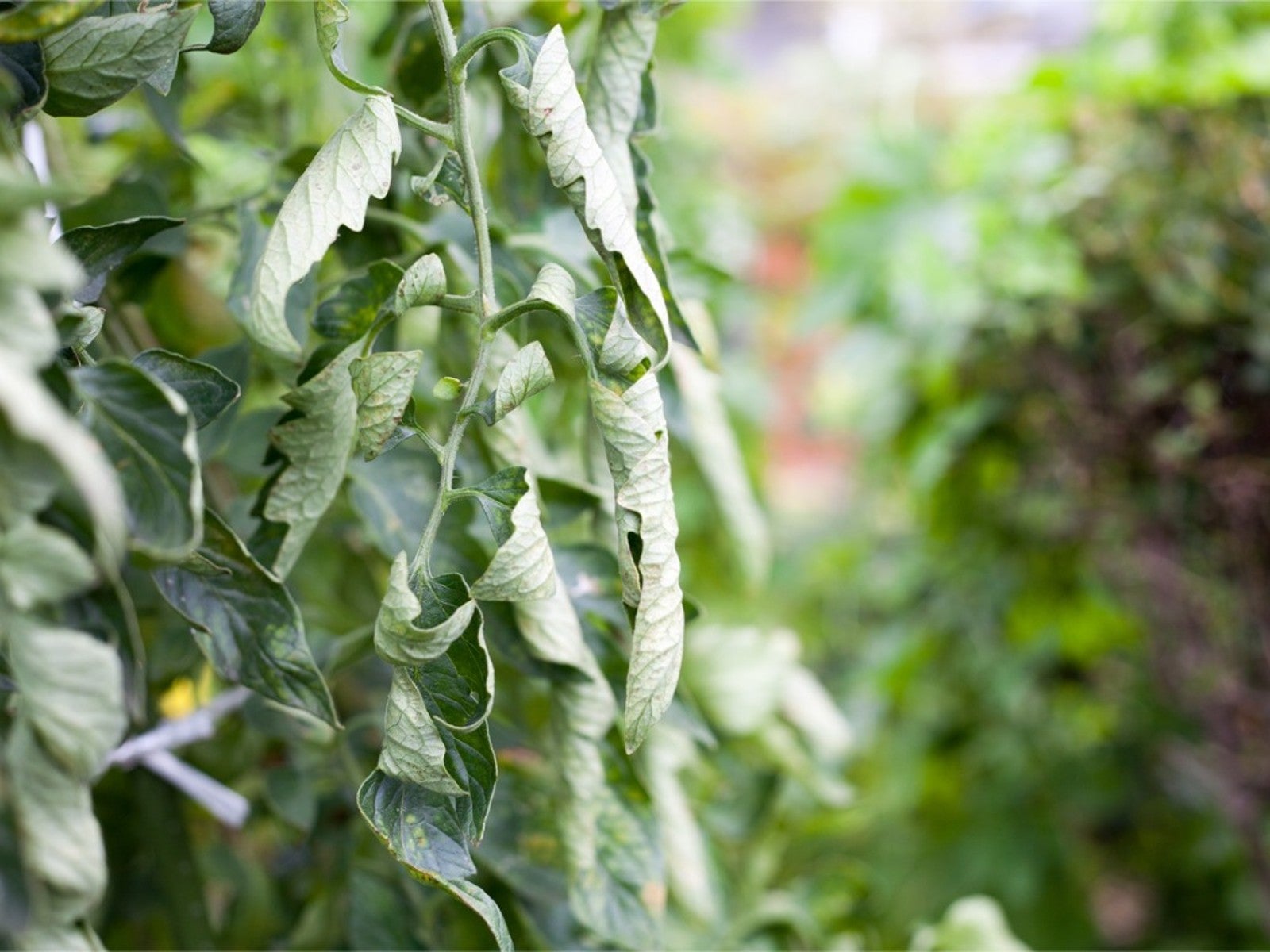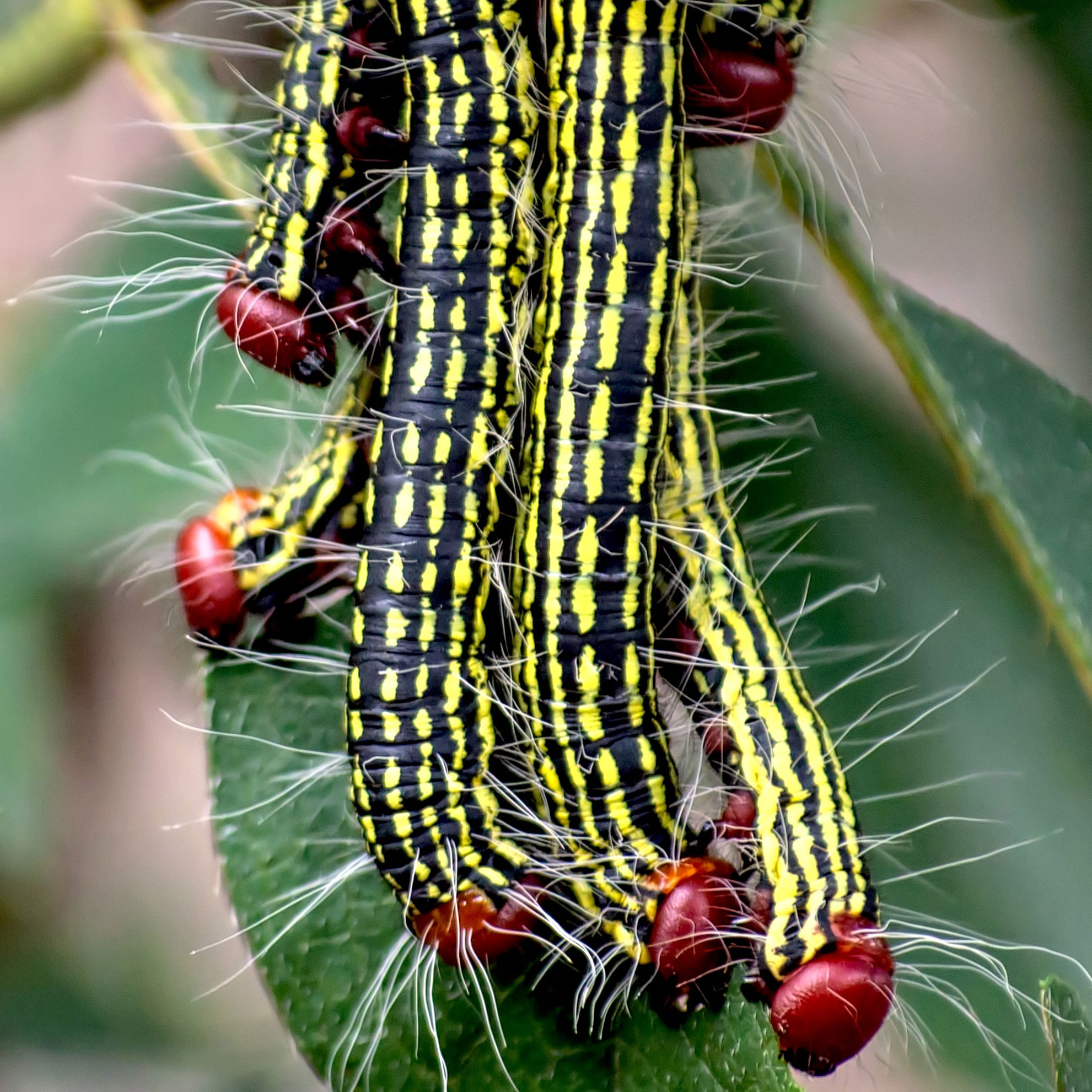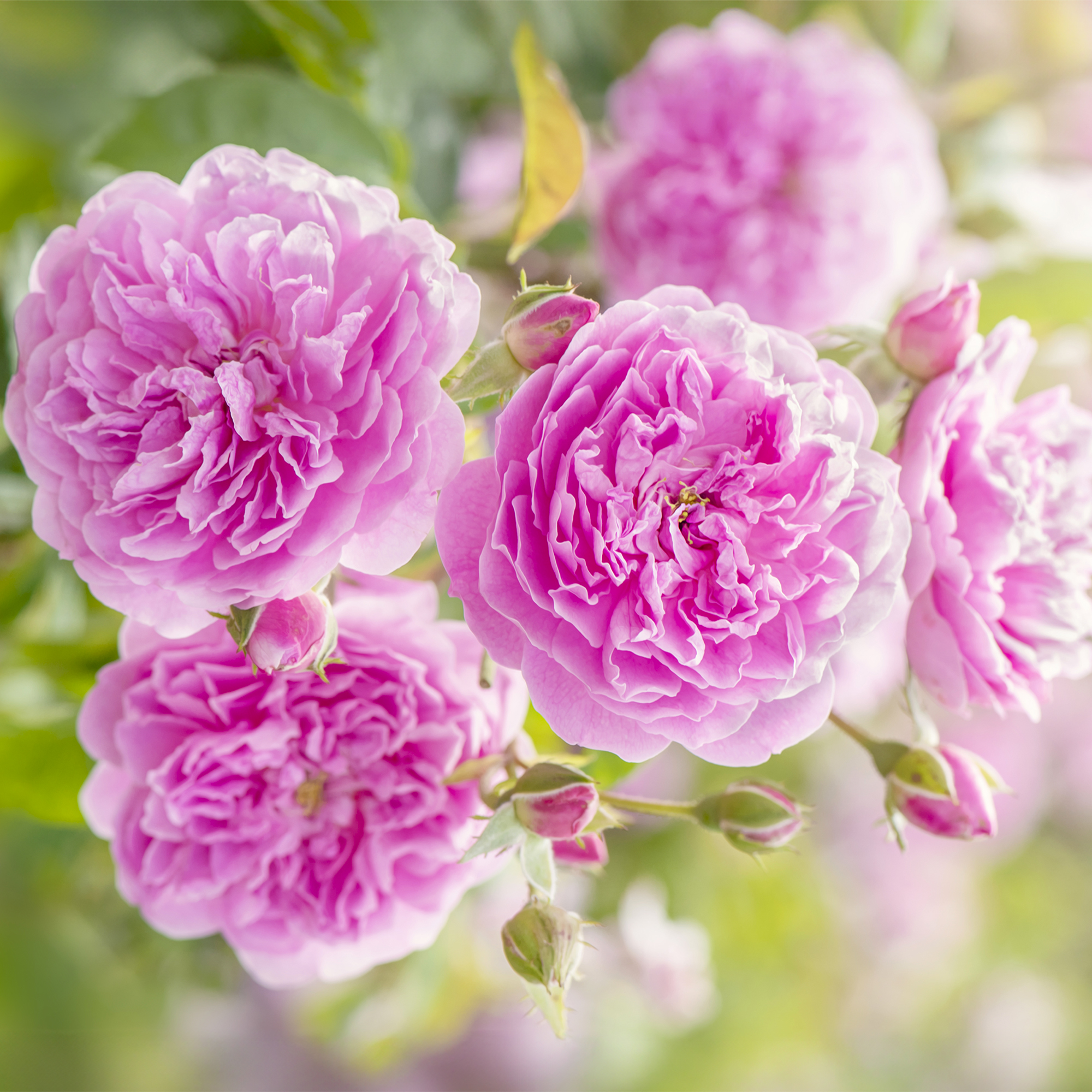Tomato Leaves Curling? Common Causes & How To Treat Them


Amy Grant
Tomatoes are one of the most popular garden crops, but they aren’t without their problems. From environmental stresses to pest damage and disease, growing the perfect tomato can sometimes be challenging. Read on to learn how to deal with leaf curl on tomato plants.
What Is Tomato Leaf Curl?
Tomato leaf curl is just what it sounds like. You may see your tomato leaves curling or rolling up and beginning to appear crumpled. Plant growth soon becomes stunted and may even take on a bush-like growth habit. Flowers usually will not develop, and those that do simply drop off. In addition, fruit production will be significantly reduced.
Leaf curl may start out slowly and speed up as new growth appears. Sometimes all the leaves are affected and sometimes only new growth. The plant’s leaves may also become yellow or twisted.
Why Are My Tomato Leaves Curling?
Curling of tomato leaves is caused by a number of factors, some more serious than others. The issue may be environmental, chemical, biological or even a combination. Plant growth soon becomes stunted and may even take on a bush-like growth habit.
Environmental Factors
Tomato plant leaf curl, also known as leaf roll, affects indeterminate varieties more often than determinate, and is most often due to environmental factors. These factors include premature planting, excessive moisture and/or nitrogen, heat, drought, transplant shock, lack of phosphorus, drastic pruning, or root damage due to cultivation. While its exact cause may be unknown, it’s believed to be a sort of self-defense mechanism.
During cool, moist conditions, leaves may roll upward and become leathery in an effort to repel excessive moisture. This specific condition occurs around fruit setting time and is most commonly seen on staked and pruned plants.
Curling tomato leaves may also be triggered by just the opposite—uneven watering, high temperatures, and dry spells. Leaves will curl upward to conserve water but they do not take on the leathery-like appearance. Plum and paste varieties are most commonly affected.
Gardening tips, videos, info and more delivered right to your inbox!
Sign up for the Gardening Know How newsletter today and receive a free copy of our e-book "How to Grow Delicious Tomatoes".
Leaf curl in tomatoes that is due to environmental factors will usually begin in the lower, older leaves first. Initially the leaves bend upward and roll inward lengthwise. Often the affected leaves thicken and gain a leathery texture, even while retaining their normal green coloration.
Herbicides
Herbicide drift from 2, 4-D or dicamba, or contaminated compost containing pasture herbicides can cause leaf curl. Symptoms vary somewhat depending upon the herbicide, but generally leaves roll downward with twisted growth. New growth is affected first. Stems may turn white and split, and fruit may become deformed.
Pests and Viruses
Curling tomato leaves may be a sign of a viral infection. Normally this virus is transmitted through whiteflies or through infected transplants.
Broad mites can also cause leaf curl on tomato plants. They may be tiny, but they inject powerful toxins into the leaves that cause them to twist and curl. These almost microscopic insects attack a variety of veggies and flowers, and target the young tender foliage first.
Tomato mosaic virus causes leaf roll followed by mottled coloration. The infected fruit is brown inside. An entire group of “geminiviruses” can spread to tomato plants via the sweet potato or silver leaf whitefly. Tomato yellow leaf curl virus is one of the most common, but other viruses such as chino del tomato virus, tomato leaf crumple virus, tomato yellow mosaic virus and tomato yellow streak virus are all instigated by the whitefly and can affect tomatoes.
How to Treat Curling Leaves on Tomato Plants
While the damage may look similar regardless of the cause, the methods of control are very different.
In the case of environmental factors, prune your plant conservatively, avoid excess fertilizer (especially those high in nitrogen), be consistent with irrigation, shade plants from high heat whenever possible and select varieties that are somewhat resistant to leaf curl. Although tomato leaf curl may not affect the overall growth or crop yields, when the problem is caused by a viral infection, it may be necessary to entirely remove the infected plants.
Areas that have been poisoned by herbicide drift can lay fallow for a season or two, or it might make sense to grow a cover crop. You may also want to rotate a crop that’s resistant to the herbicide, such as turnip or kale. The herbicide will eventually break down -- you just have to outwait it.
Prevention
Weeds can act as hosts to viruses. Be sure to control weeds around your tomato crops, taking care not to damage the plants’ root systems. It is also helpful to sanitize any tools used on diseased plants.
You may want to destroy tomato plant leaf curl infected plants to prevent any further transmission to those nearby.
The real key to managing tomato leaf curl is prevention. Plant only pest and disease-resistant varieties. It also helps to protect garden plants from possible whitefly infestations by adding floating row covers.
With regard to tomato yellow leaf curl and other geminiviruses, there are now resistant varieties of tomato available. However, they are often still prone to other viral diseases. If you confirm tomato yellow leaf curl in your tomato plants, it may be best to destroy them since, as we’ve mentioned, there is currently no quick fix for the problem.
Looking for additional tips on growing perfect tomatoes? Download our FREE Tomato Growing Guide and learn how to grow delicious tomatoes.

Nikki Tilley has been gardening for nearly three decades. The former Senior Editor and Archivist of Gardening Know How, Nikki has also authored six gardening books.
- Amy GrantWriter
-
 What’s Wrong With Your Azaleas? Identify, Tackle And Prevent 6 Common Azalea Pests
What’s Wrong With Your Azaleas? Identify, Tackle And Prevent 6 Common Azalea PestsIf you’ve spotted signs of azalea leaf damage, don’t panic – here’s how to identify the most common azalea pests so you can take action swiftly and keep plants healthy
-
 How Much Sun Do Roses Need To Grow? Understanding Rose Light Requirements
How Much Sun Do Roses Need To Grow? Understanding Rose Light RequirementsDiscover how much sunlight your roses really need to grow strong, bloom beautifully, and stay healthy all season long.